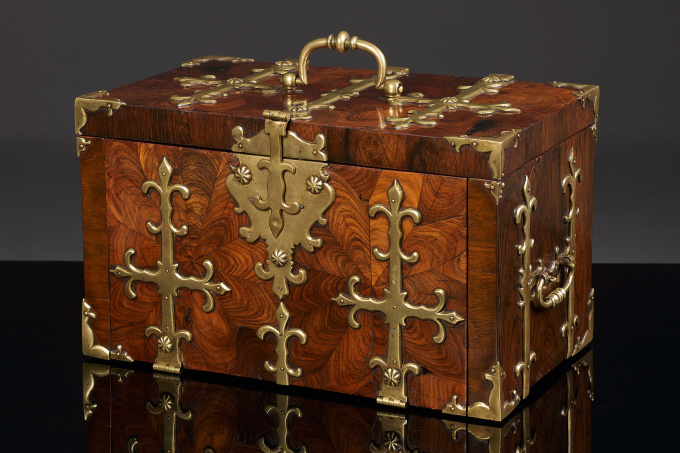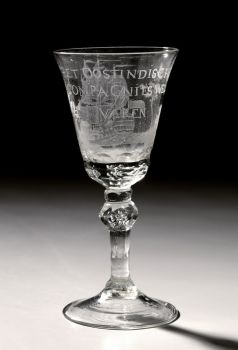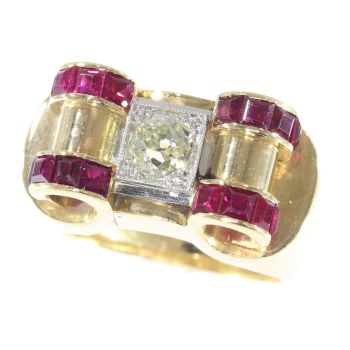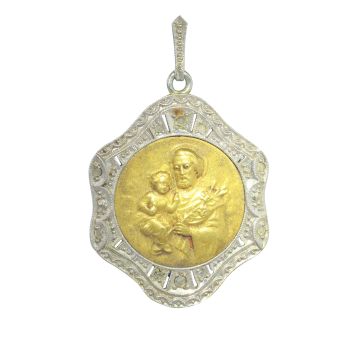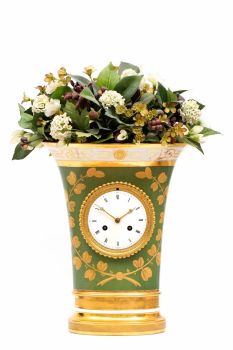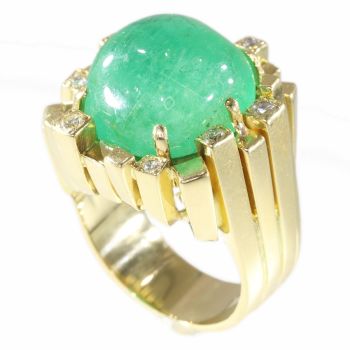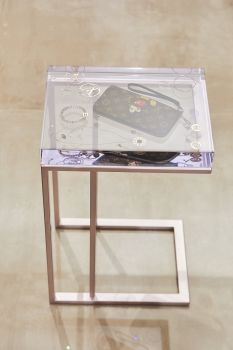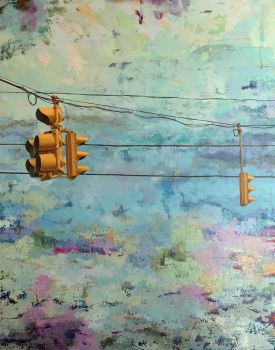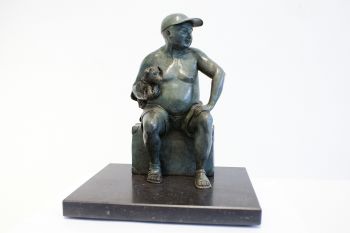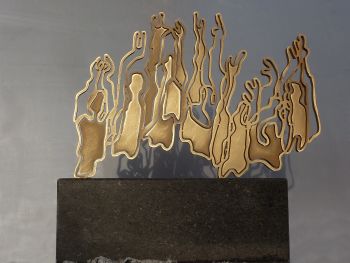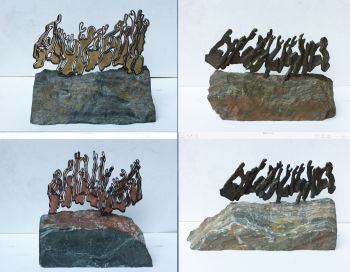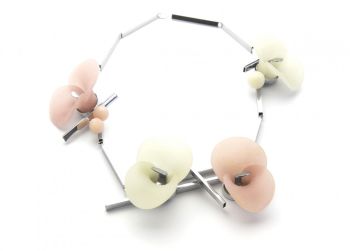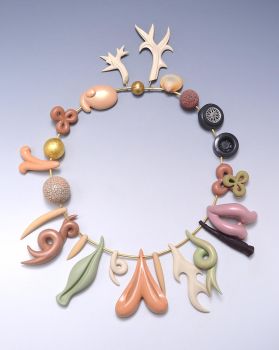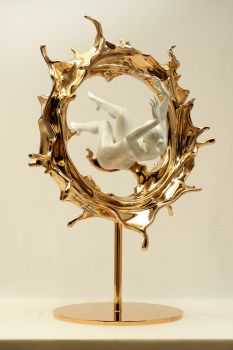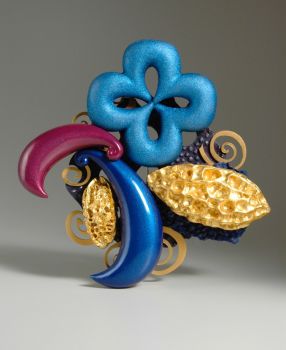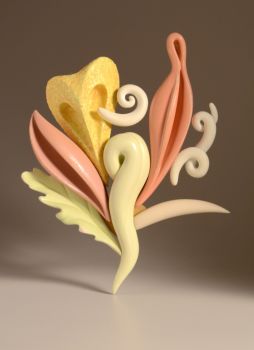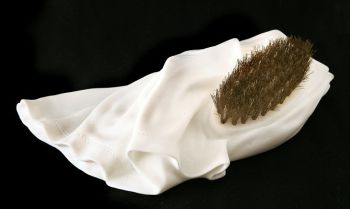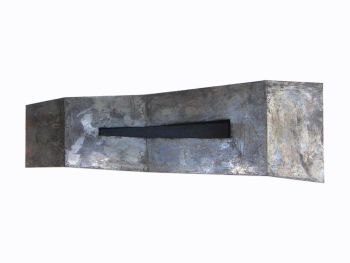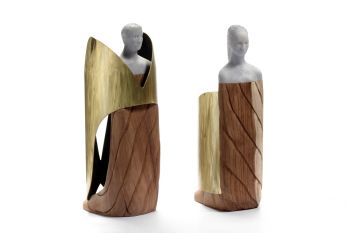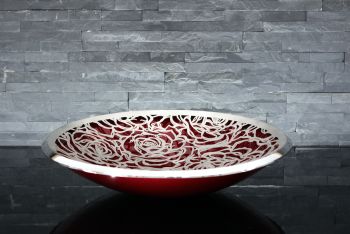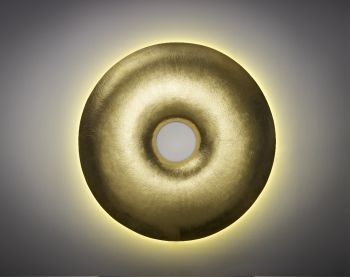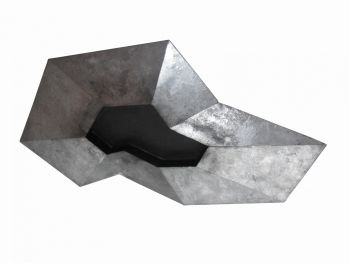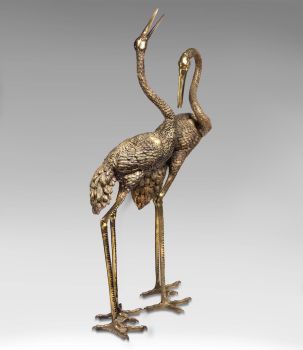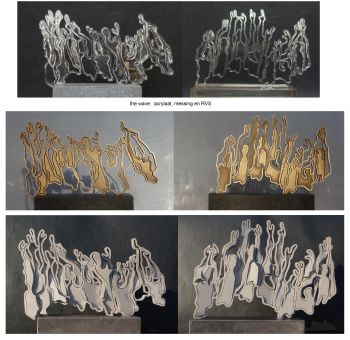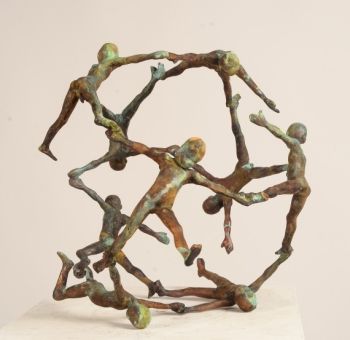Cofre Pequeno 1690 - 1700
Artista Desconhecido
MadeiraOlivaMetalRosewoodLatão
23 ⨯ 38 ⨯ 23 cm
ConditionExcellent
Atualmente indisponível via Gallerease
- Sobre arteAn oak travelling chest veneered with olive-wood and rosewood. The case is ornamented with brass fittings shaped in leaf motifs. The fittings prevented the case from being damaged during travel. The handlebars on the sides facilitate transportation. The central escutcheon has a concealed latch that needs to be unbolted before the actual keyhole is revealed. When the lid is opened, it gives access to the largest storage compartment. In the lid there is a cover to store letters or documents. In the compartment there are to concealed hiding places.
With a latch the front cover can be opened. This gives access to two drawers. When the drawers are removed, two further secret compartments can be reached. The entire interior is made out of rosewood and rosewood veneer.
Commonly this type of traveling chest, or strongbox, is presumed to be French or Flemish. Nevertheless, they are much more common in England than anywhere else. Recent research presumes that the bulk of these trunks is made in London between approximately 1660 and 1720.
The earliest proof of the manufacturing of this type of chest is found in inventory listings from the legacy of Edward Traherne, a renowned joiner and cabinet-maker, who died in London in 1675. Traherne’s trading stock contained a number of strongboxes and travelling chests with diverse specifications. Remarkably, some of these objects had not yet been completed. - Sobre artista
Pode acontecer que um artista ou criador seja desconhecido.
Algumas obras não devem ser determinadas por quem são feitas ou são feitas por (um grupo de) artesãos. Exemplos são estátuas dos tempos antigos, móveis, espelhos ou assinaturas que não são claras ou legíveis, mas também algumas obras não são assinadas.
Além disso, você pode encontrar a seguinte descrição:
•"Atribuído a …." Na opinião deles, provavelmente uma obra do artista, pelo menos em parte
• “Estúdio de…” ou “Oficina de” Em sua opinião um trabalho executado no estúdio ou oficina do artista, possivelmente sob sua supervisão
• "Círculo de ..." Na opinião deles, uma obra da época do artista mostrando sua influência, intimamente associada ao artista, mas não necessariamente seu aluno
•“Estilo de…” ou “Seguidor de…” Na opinião deles, um trabalho executado no estilo do artista, mas não necessariamente por um aluno; pode ser contemporâneo ou quase contemporâneo
• "Maneira de ..." Na opinião deles, uma obra no estilo do artista, mas de data posterior
•"Depois …." Na opinião deles uma cópia (de qualquer data) de uma obra do artista
• “Assinado…”, “Datado…” ou “Inscrito” Na opinião deles, a obra foi assinada/datada/inscrita pelo artista. A adição de um ponto de interrogação indica um elemento de dúvida
• "Com assinatura ….”, “Com data ….”, “Com inscrição ….” ou “Tem assinatura/data/inscrição” na opinião deles a assinatura/data/inscrição foi adicionada por outra pessoa que não o artista
Artwork details
Related artworks
- 1 - 4 / 12
Artista Desconhecido
Japanese transition-style lacquer coffer 1640 - 1650
Preço em pedidoZebregs & Röell - Fine Art - Antiques
Artista Desconhecido
Japanese transition-style lacquer coffer 1640 - 1650
Preço em pedidoZebregs & Röell - Fine Art - Antiques
1 - 4 / 24Artista Desconhecido
Japanese transition-style lacquer coffer 1640 - 1650
Preço em pedidoZebregs & Röell - Fine Art - Antiques
1 - 4 / 4- 1 - 4 / 24

